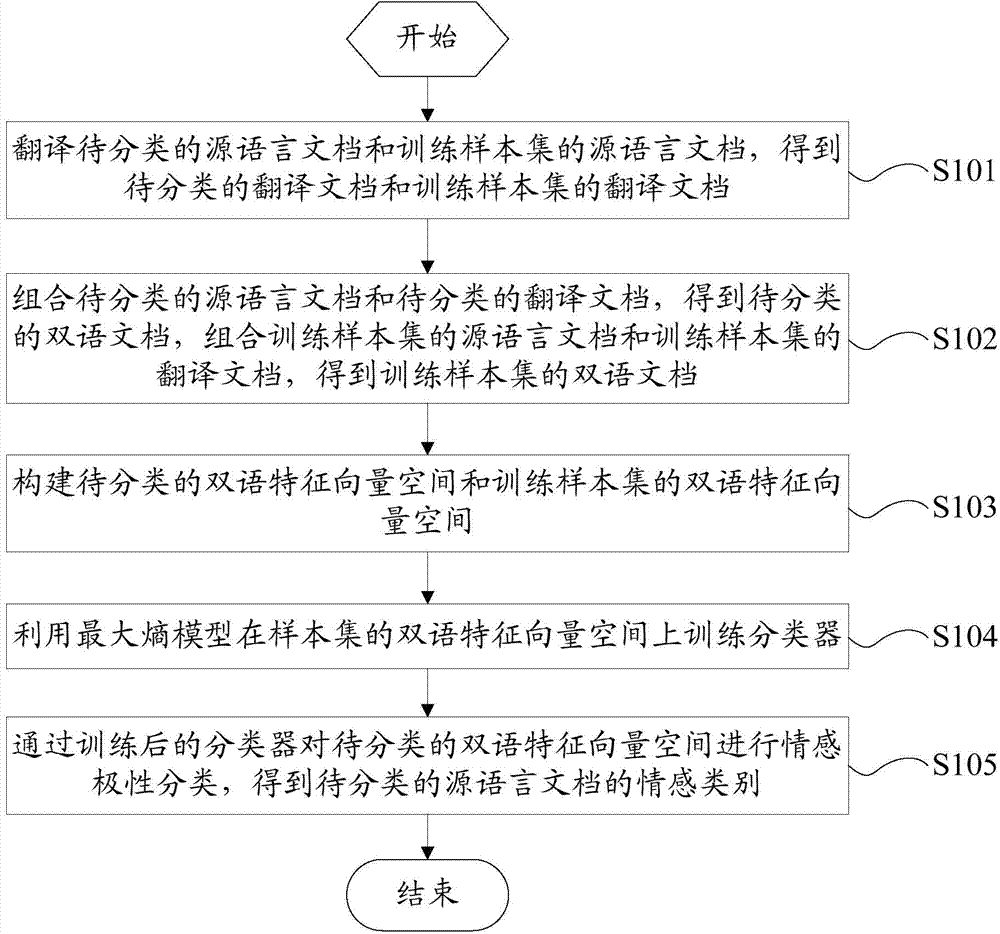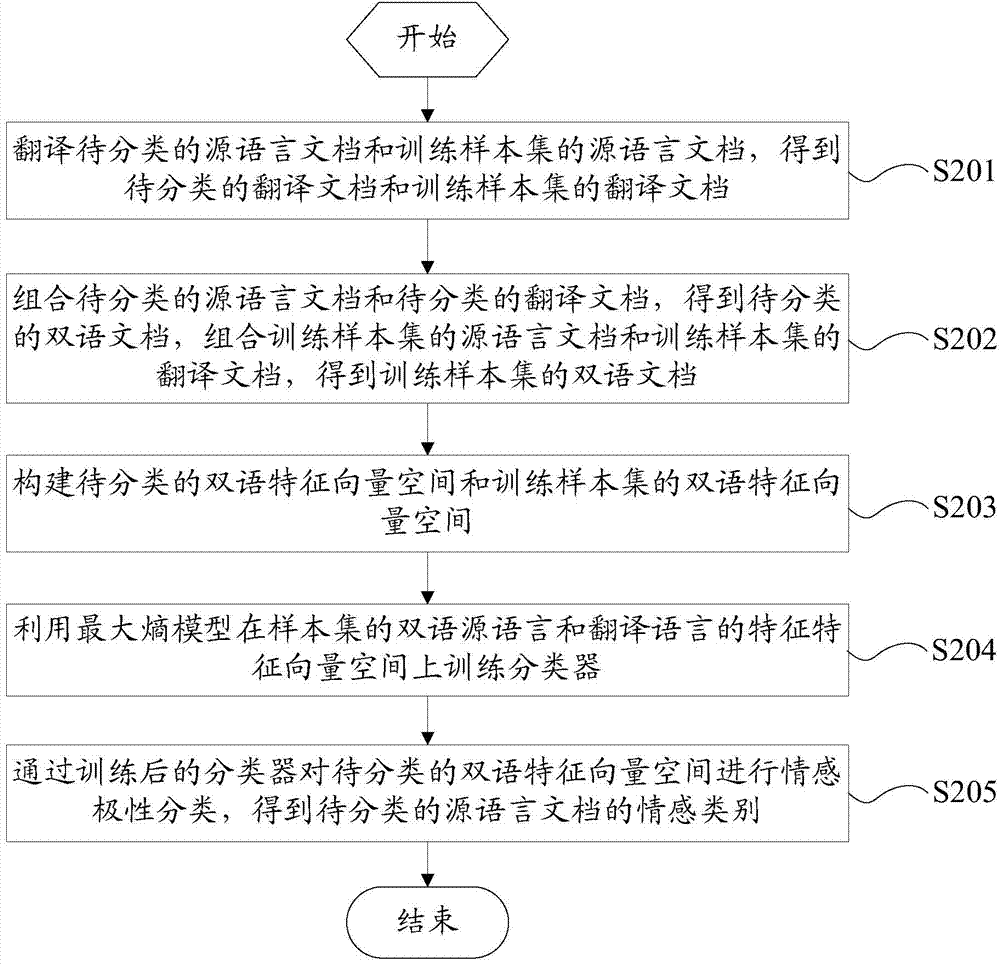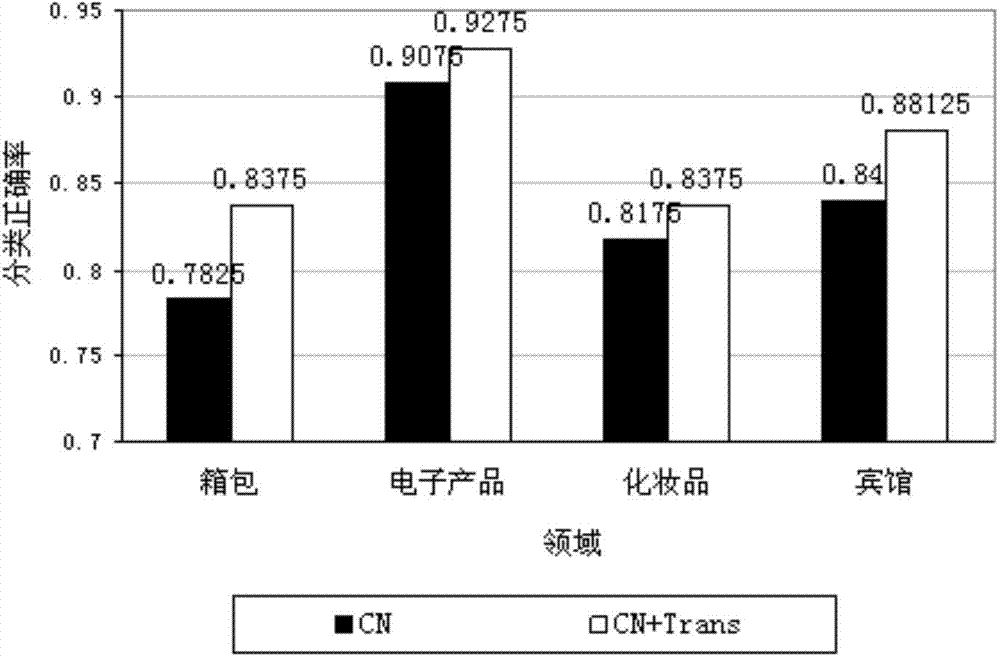Bilingual sentiment classification method and device
An emotion classification and bilingual technology, applied in the field of information processing, can solve problems affecting classification accuracy and classification result errors, and achieve the effect of shortening the time of emotion classification, reducing dimensions, and improving accuracy
- Summary
- Abstract
- Description
- Claims
- Application Information
AI Technical Summary
Problems solved by technology
Method used
Image
Examples
Embodiment 1
[0048] see figure 1 , is a schematic flow chart of a bilingual emotion classification method provided in Embodiment 1 of the present invention, the method comprising:
[0049] Step S101: Translate the source language documents to be classified and the source language documents of the training sample set to obtain the translated documents to be classified and the translated documents of the training sample set.
[0050] In this embodiment, a machine translation system such as Google Translate may be used to translate the source language documents to be classified and the source language documents of the training sample set. For example, if the source language document is a Chinese document, Google Translate can be used to translate the Chinese document into an English document.
[0051] Step S102: Combine the source language document to be classified and the translation document to be classified to obtain the bilingual document to be classified, and combine the source language...
Embodiment 2
[0060] see figure 2 , is a schematic flow chart of a bilingual emotion classification method provided in Embodiment 1 of the present invention, the method comprising:
[0061] Step S201: Translate the source language documents to be classified and the source language documents of the training sample set to obtain the translated documents to be classified and the translated documents of the training sample set.
[0062] In this embodiment, a machine translation system such as Google Translate may be used to translate the source language documents to be classified and the source language documents of the training sample set.
[0063] Step S202: Combine the source language document to be classified and the translation document to be classified to obtain the bilingual document to be classified, and combine the source language document of the training sample set and the translation document of the training sample set to obtain the bilingual document of the training sample set.
...
Embodiment 3
[0096] see Figure 5 , is a schematic structural diagram of a bilingual emotion classification device provided in Embodiment 3 of the present invention, which may include: a translation unit 101 , a combination unit 102 , a construction unit 103 , a training unit 104 and a classification unit 105 . in:
[0097] The translation unit 101 is configured to translate the source language documents to be classified and the source language documents of the training sample set to obtain the translated documents to be classified and the translated documents of the training sample set.
[0098] The combination unit 102 is used to combine the source language document to be classified and the translation document to be classified to obtain the bilingual document to be classified, and combine the source language document of the training sample set and the translation document of the training sample set to obtain the training Bilingual documents for the sample set.
[0099] The constructio...
PUM
 Login to View More
Login to View More Abstract
Description
Claims
Application Information
 Login to View More
Login to View More - R&D
- Intellectual Property
- Life Sciences
- Materials
- Tech Scout
- Unparalleled Data Quality
- Higher Quality Content
- 60% Fewer Hallucinations
Browse by: Latest US Patents, China's latest patents, Technical Efficacy Thesaurus, Application Domain, Technology Topic, Popular Technical Reports.
© 2025 PatSnap. All rights reserved.Legal|Privacy policy|Modern Slavery Act Transparency Statement|Sitemap|About US| Contact US: help@patsnap.com



